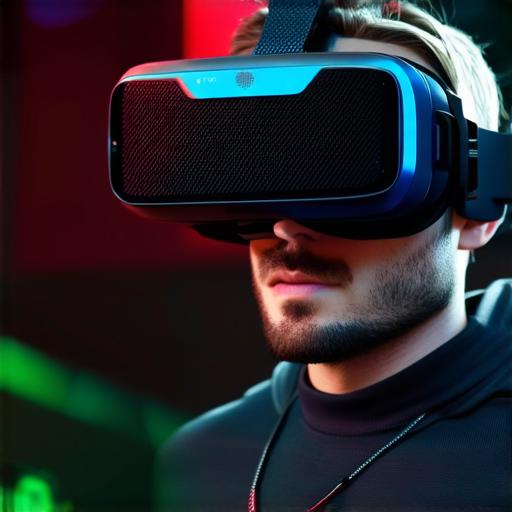
What does a virtual reality headset do?
What is a Virtual Reality Headset?
A virtual reality headset is a device that tracks the user’s movements and provides an immersive experience by displaying a 3D environment in front of their eyes. The headset typically includes sensors that track the movement of the user’s head and adjust the image accordingly, creating the illusion of being in a virtual world.

Virtual reality headsets come in different types and designs, including standalone, wired, and wireless models. Some popular virtual reality headsets include Oculus Rift, HTC Vive, and PlayStation VR.
How does a Virtual Reality Headset work?
The virtual reality headset works by capturing the user’s movements using sensors such as accelerometers, gyroscopes, and magnetometers. These sensors track the movement of the user’s head and adjust the image displayed in front of their eyes accordingly.
The virtual reality experience is created using computer-generated graphics (CGI) that are rendered in real-time based on the user’s movements and interactions with the virtual environment. The CGI is projected onto two screens, one for each eye, creating a stereoscopic image that mimics the way our eyes perceive depth and distance.
The virtual reality headset also includes audio technology that provides immersive sound effects, further enhancing the user’s experience.
Benefits of using a Virtual Reality Headset
Virtual reality headsets offer numerous benefits for users, including:
- Immersive Experience: Virtual reality headsets provide an immersive experience that allows users to explore virtual environments in a realistic way. This can be particularly useful for training and simulation purposes, such as medical training or flight simulation.
- Interactive Experience: Virtual reality headsets allow users to interact with virtual objects and environments in a natural way. This can be used for gaming, educational purposes, or even therapy and rehabilitation.
- Enhanced Creativity: Virtual reality headsets offer an environment where users can create and design without the limitations of the physical world. This can be particularly useful for architects, designers, and artists.
- Reduced Costs: Virtual reality headsets can reduce costs associated with physical training and simulation by providing a more cost-effective alternative. For example, medical students can use virtual reality to simulate surgeries instead of performing them on real patients.
Case Studies of Virtual Reality Headset Usage
Virtual reality headsets have been used in various industries and applications, including:
- Medical Training: Virtual reality headsets have been used for medical training purposes, such as simulating surgeries and allowing doctors to practice their skills in a safe environment. For example, the University of California, San Francisco (UCSF) has developed a virtual reality simulation that allows surgeons to practice complex surgeries without risking patient safety.
- Flight Simulation: Virtual reality headsets have been used for flight simulation purposes, allowing pilots to train in a realistic environment without the need for expensive equipment or real planes. For example, the United States Air Force uses virtual reality simulations to train its pilots for combat scenarios.
- Gaming: Virtual reality headsets have been used for gaming purposes, providing an immersive and interactive experience that allows players to fully engage with the game world. For example, the popular video game “Beat Saber” can be played using a virtual reality headset, allowing players to use their body movements to swing virtual lightsabers to the beat of music.
- Education: Virtual reality headsets have been used for educational purposes, such as providing an interactive and immersive learning experience for students. For example, the National Geographic Museum has developed a virtual reality exhibit that allows visitors to explore the solar system in 3D.
Expert Opinions on Virtual Reality Headsets
Virtual reality headsets have been praised by experts in various fields for their potential to revolutionize how we interact with technology and each other.


